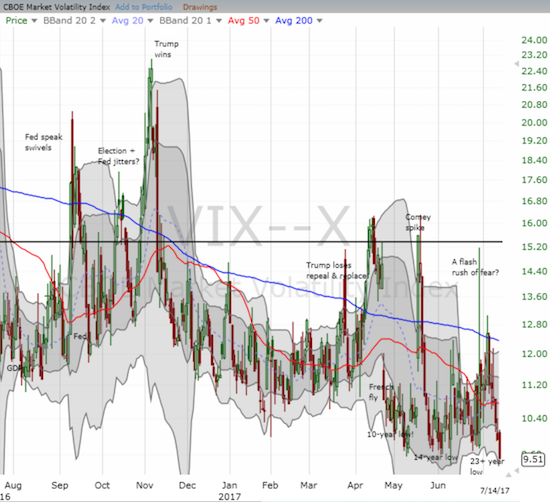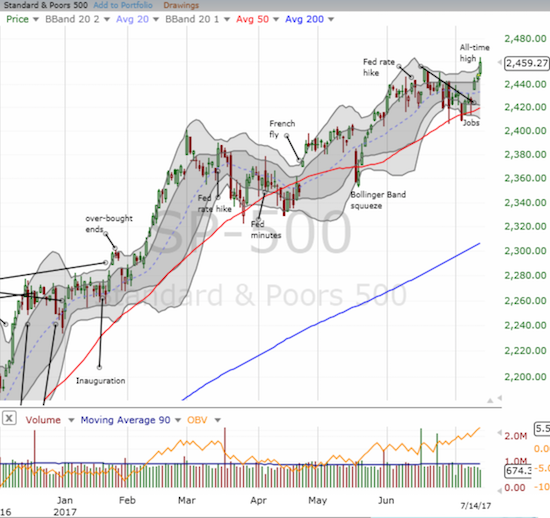AT40 = 63.2% of stocks are trading above their respective 40-day moving averages (DMAs)
AT200 = 59.5% of stocks are trading above their respective 200DMAs
VIX = 9.5 (volatility index) (since 1990, only TWO days have been lower, both in December, 1993!)
Short-term Trading Call: cautiously bullish
Commentary
The volatility index, the VIX, closed at a near record low on Friday, July 14, 2017. Only two days since 1990 have seen the VIX close lower: December 23, 1993 at 9.48 and December 22, 1993 at 9.31! (data from Yahoo Finance).

The volatility made a marginal new low, but hit a major milestone. Only two other days, nearly 24 years ago, have seen the VIX close at a lower level than now.
As I keep emphasizing during these periods of extremely low volatility, these VIX readings are near-term bullish and not bearish as one might assume. So it is quite appropriate on this day that the S&P 500 (SPY) convincingly punched through its previous all-time high. There was little hesitation as the index exceeded the previous high by 6 points.

The S&P 500 firmly printed a fresh all-time high by extending beyond its upper-Bollinger Band (BB).
The Nasdaq and the PowerShares QQQ ETF (QQQ) came up just short of their respective all-time highs.
I now have to notch my short-term trading call back to cautiously bullish. The reading is cautious for now because I want to see what happens when AT40 (T2108), the percentage of stocks trading above their respective 40-day moving averages (DMAs), reaches the overbought threshold of 70%. If AT40 fades, I may have to revert all the way down to bearish. If AT40 rises to the occasion, I will drop the caution from my bullishness.
With earnings season getting into full gear, there is not much more to say about the market here. My earnings related trading got off to a poor start with a batch of earnings in the financials that disappointed the market. The gap down cut my call options on the Financial Select Sector SPDR ETF (XLF) in half. Fortunately, buyers rushed into the gap and reduced my paper loss. I will take this as a signal to go back to my usual routine of playing earnings after the news and after the market’s initial reactions. For example, I resisted the temptation to double down, and I will wait to take further action until after the next batch of earnings in the financials.













Leave A Comment